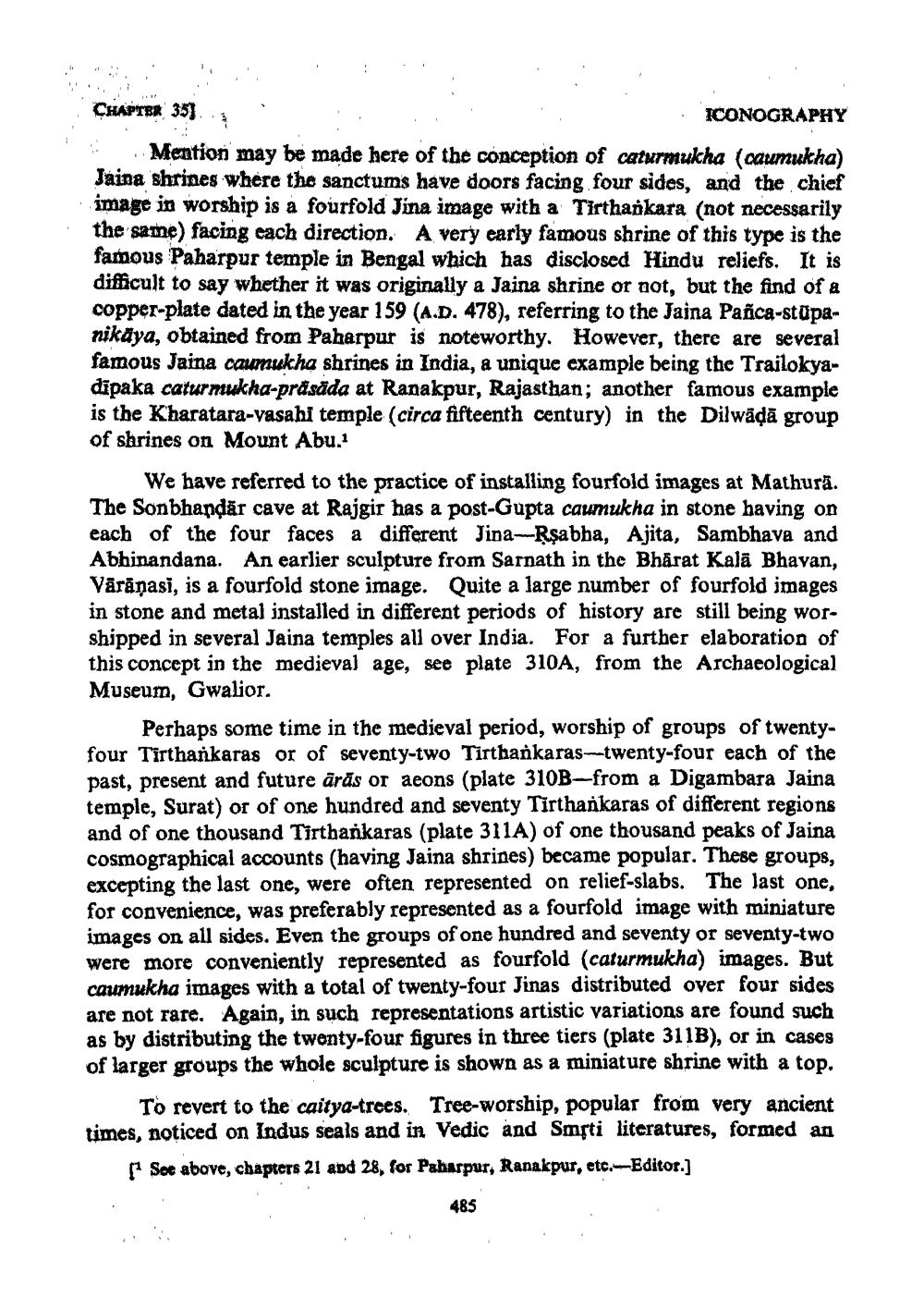________________
CHAPTER 35)
ICONOGRAPHY Mention may be made here of the conception of caturmukha (caumukha) Jaina shrines where the sanctums have doors facing four sides, and the chief image in worship is a fourfold Jina image with a Tirthankara (not necessarily the same) facing each direction. A very early famous shrine of this type is the famous Paharpur temple in Bengal which has disclosed Hindu reliefs. difficult to say whether it was originally a Jaina shrine or not, but the find of a copper-plate dated in the year 159 (A.D. 478), referring to the Jaina Pañca-stupanikaya, obtained from Paharpur is noteworthy. However, there are several famous Jaina caumukha shrines in India, a unique example being the Trailokyadīpaka caturmukha-präsåda at Ranakpur, Rajasthan; another famous example is the Kharatara-vasahi temple (circa fifteenth century) in the Dilwädā group of shrines on Mount Abu.
We have referred to the practice of installing fourfold images at Mathurā. The Sonbhandăr cave at Rajgir has a post-Gupta caumukha in stone having on each of the four faces a different Jina-Rşabha, Ajita, Sambhava and Abhinandana. An earlier sculpture from Sarnath in the Bharat Kalā Bhavan, Vārāṇasi, is a fourfold stone image. Quite a large number of fourfold images in stone and metal installed in different periods of history are still being worshipped in several Jaina temples all over India. For a further elaboration of this concept in the medieval age, see plate 310A, from the Archaeological Museum, Gwalior.
Perhaps some time in the medieval period, worship of groups of twentyfour Tirthankaras or of seventy-two Tirthankaras--twenty-four each of the past, present and future ārās or aeons (plate 310B-from a Digambara Jaina temple, Surat) or of one hundred and seventy Tirthankaras of different regions and of one thousand Tirthankaras (plate 311A) of one thousand peaks of Jaina cosmographical accounts (having Jaina shrines) became popular. These groups, excepting the last one, were often represented on relief-slabs. The last one, for convenience, was preferably represented as a fourfold image with miniature images on all sides. Even the groups of one hundred and seventy or seventy-two were more conveniently represented as fourfold (caturmukha) images. But caumukha images with a total of twenty-four Jinas distributed over four sides are not rare. Again, in such representations artistic variations are found such as by distributing the twenty-four figures in three tiers (plate 311B), or in cases of larger groups the whole sculpture is shown as a miniature shrine with a top.
To revert to the caitya-trees. Tree-worship, popular from very ancient times, noticed on Indus seals and in Vedic and Smrti literatures, formed an
Soe above, chapters 21 and 28, for Paharpur, Ranakpur, etc.--Editor.]
485




